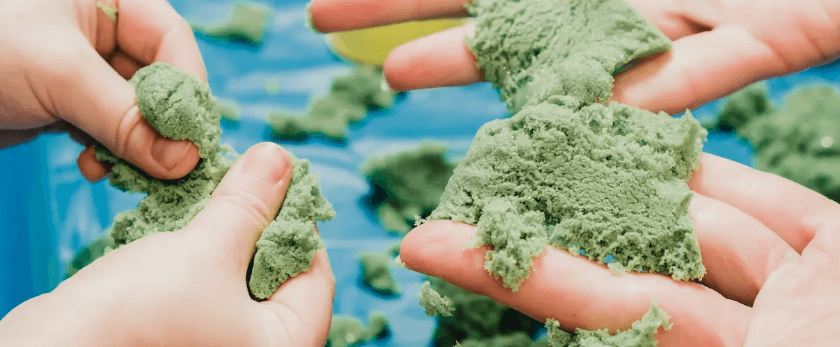Are you tired of buying expensive and environmentally harmful kinetic sand for your kids? Or maybe you're looking for a more sustainable option for your DIY projects? Look no further, because making your own kinetic sand is not only easy and affordable, but it's also better for the environment.
In this article, we'll discuss why traditional kinetic sand is bad for the environment, the benefits of making your own, and provide a step-by-step guide on how to make your own homemade kinetic sand. Let's get started!
Why Traditional Kinetic Sand is Bad for the Environment
Traditional kinetic sand, also known as "magic sand" or "moon sand," is a popular toy made of colored sand and a binding agent, such as polydimethylsiloxane (PDMS). While it may seem harmless and fun, traditional kinetic sand has negative impacts on the environment.
-
Non-Biodegradable: The binding agent used in traditional kinetic sand, PDMS, is a type of silicone oil that is not biodegradable. This means that it will not break down naturally in the environment and can persist for hundreds of years.
-
Harmful to Marine Life: When traditional kinetic sand is disposed of improperly, it can end up in our oceans and waterways. The PDMS in the sand can harm marine life by coating their gills and suffocating them.
-
Chemicals: Traditional kinetic sand often contains dyes and other chemicals that can be harmful to both the environment and human health.
-
Packaging: Traditional kinetic sand is often packaged in plastic containers, contributing to the plastic pollution crisis.
Why Making Your Own is Better for the Environment
Making your own kinetic sand not only eliminates the negative impacts of traditional kinetic sand, but it also has several benefits for the environment.
-
Biodegradable Ingredients: By making your own kinetic sand, you can use natural and biodegradable ingredients, such as sand, cornstarch, and water. This means that when the sand is disposed of, it will break down naturally in the environment without causing harm.
-
Less Waste: Making your own kinetic sand means you can make only the amount you need, reducing the amount of waste produced.
-
No Harmful Chemicals: By using natural ingredients, you can avoid harmful chemicals that are often found in traditional kinetic sand.
-
Reusable Packaging: You can store your homemade kinetic sand in a reusable container, reducing the need for single-use plastic packaging.

What You'll Need
To make your own homemade kinetic sand, you'll need the following ingredients and materials:
- Sand (preferably fine-grained)
- Cornstarch
- Water
- Food coloring (optional)
- Mixing bowl
- Measuring cups and spoons
- Spoon or spatula
- Airtight container for storage
Directions
Now that you have all the necessary ingredients and materials, let's get started on making your own homemade kinetic sand.
-
In a mixing bowl, combine 2 cups of sand and 1 cup of cornstarch. Mix well until fully combined.
-
Slowly add 1/2 cup of water to the mixture, stirring continuously. The mixture should start to clump together and resemble wet sand.
-
If desired, add a few drops of food coloring to the mixture and continue to mix until the color is evenly distributed.
-
Once the mixture is well combined, use your hands to knead the sand until it reaches the desired consistency. If the sand is too dry, add a little more water. If it's too wet, add more sand and cornstarch in equal parts.
-
Your homemade kinetic sand is now ready to play with! You can use molds and tools to create different shapes and structures, just like traditional kinetic sand.
-
When you're finished playing, store your homemade kinetic sand in an airtight container to keep it fresh for future use.
Responsible Disposal
When it's time to dispose of your homemade kinetic sand, it's important to do so responsibly. Here are a few tips to ensure your homemade kinetic sand doesn't harm the environment:
- If the sand is still in good condition, consider donating it to a local school or community center for others to enjoy.
- If the sand is no longer usable, dispose of it in the trash. Do not pour it down the drain or flush it down the toilet, as it can clog pipes and harm aquatic life.
- If you used food coloring in your homemade kinetic sand, make sure to dispose of it properly according to your local regulations.
Conclusion
Making your own homemade kinetic sand is not only a fun and affordable activity, but it's also better for the environment. By using natural and biodegradable ingredients, you can enjoy the benefits of kinetic sand without harming the planet. So next time you're in need of some kinetic sand, skip the store-bought version and make your own at home. Your kids (and the environment) will thank you!










